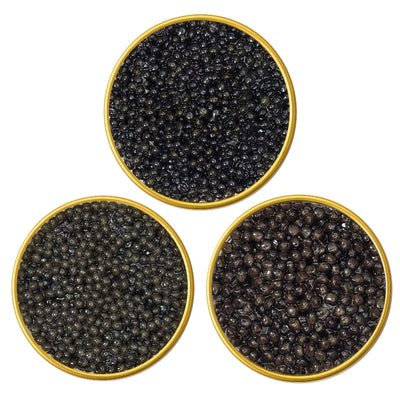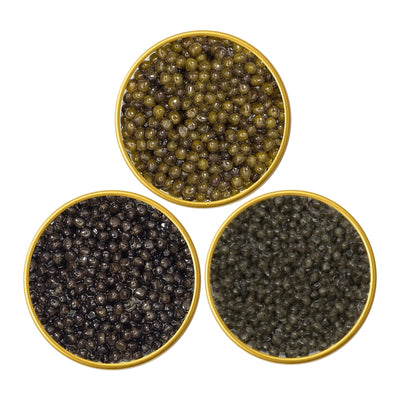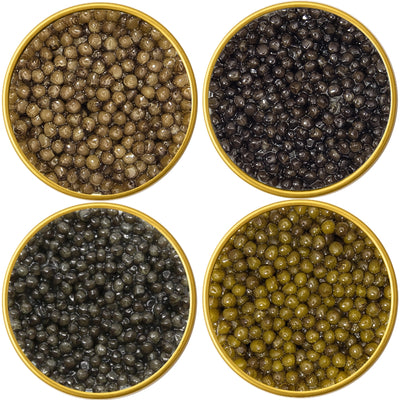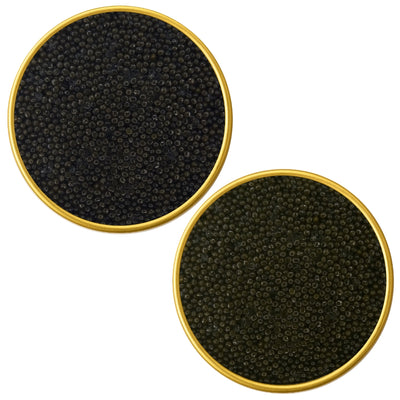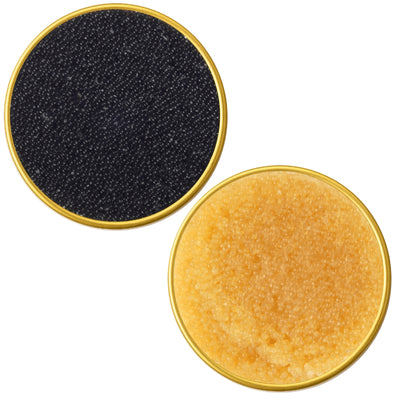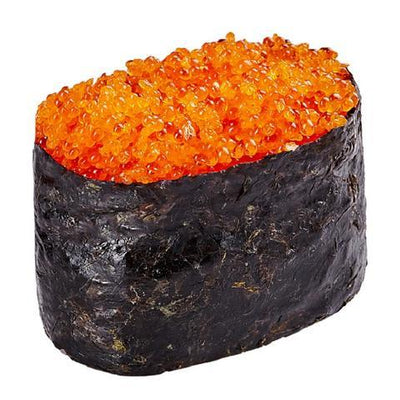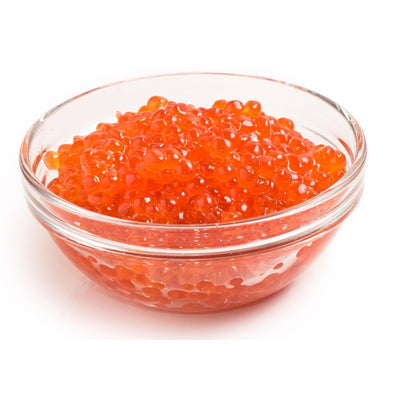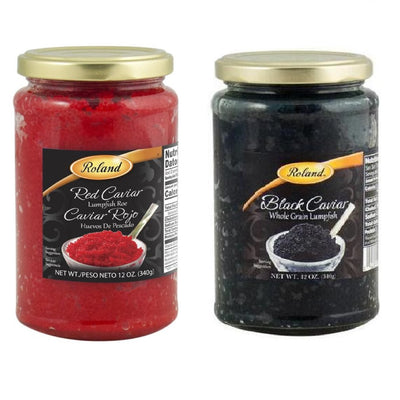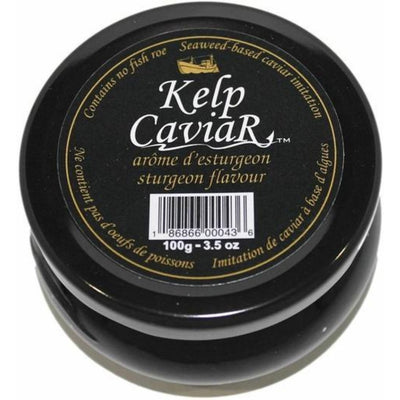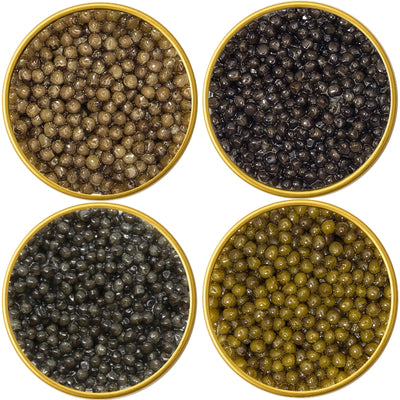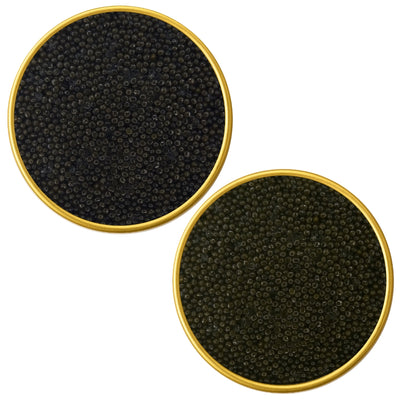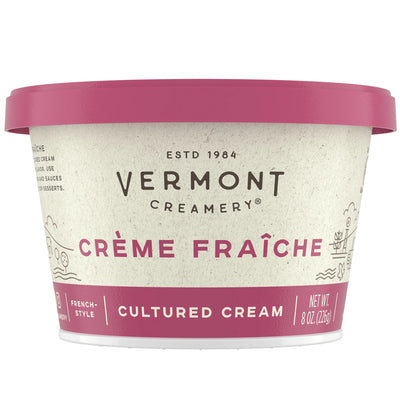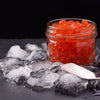Why is caviar so expensive?

The short answer is simple, supply and demand. Limited Sturgeon supply and high demand has driven its price up over time where it is now considered food only the rich and successful can enjoy. Before we dive into the factors which make caviar such an expensive product we should quickly recap what caviar actually is as there's a significant misconception and lack of understanding on this subject. Caviar is lightly salted roe (about 3% salt) of the Sturgeon family of fish and there's currently 27 known species of Sturgeon across the globe, but not all of them are harvested for caviar. Caviar is only harvested from 7 species of Sturgeon with 5 types being most known for their caviar. Those are Beluga, Sevruga, Osetra, Sterlet and American. Highly likely that you're previously heard of Beluga as it's considered to produce the tastiest caviar, and not surprisingly the Iranian Beluga won the most expensive caviar world Guinness record with a whopping then $34,500 (£2000 UK Pounds) per 2 lb. 3 oz (1 kg), which equates to nearly $1000 per ounce or $34.5 per gram.
It is only natural that after hearing numbers such as mentioned above most of us would assume that caviar is unjustly overpriced. First and very important factor is to remember that a record is not an average and certainly not the norm. The truth is that caviar sold in stores and online is affordable by most consumers. For example, at Caviar Malosol we sell River Beluga Sturgeon Caviar starting from $80.99/ounce so if you ever decide that you may want to taste caviar then saving up $81 (plus shipping if bought online) is attainable, and one ounce per person is enough to understand whether you like how it tastes or not. All of the above brings the question whether caviar is actually worth the price? I won't delve too deep into the answer to this in this article but as we've seen from our customer feedback the less impactful the caviar purchase is for your wallet the more pleasing the experience is. We've seen cases where people regret the purchase the moment they make it, as the money they used to buy the caviar wasn't spare money and they could’ve used it on something that's a necessity more than a luxury. We then get an email minutes after they've placed the order asking to cancel it saying something like "I was just trying to figure out how expensive caviar is", or "I’m sorry I made the purchase by mistake and can't really afford it", or we simply see a lot of declined transactions where they are declined for "insufficient funds" reason. People who buy caviar with their last available credit on their credit card aren't likely to be satisfied whereas people who can actually afford it rarely regret the decision to buy and try caviar and those are less likely to dislike caviar for its taste. Those aren’t just words but a summary of the feedback that we get and a combination of the order amount.
Now, once we set aside the reason some people consider caviar exorbitantly expensive we can get back to the topic of what makes caviar expensive. As mentioned above there are 27 known species of Sturgeon across the world and only 7 are used for harvesting caviar with only female fish who can actually produce caviar you are left with a very small population of fish whose roe can be used to make caviar. Unlike many other species who can procreate within a short period of time such as months, weeks, and some even days, for Sturgeon this process takes years. Depending on the species most Sturgeon reach sexual maturity between 8 and 20 years old, and can live up to 100 years old, but the process of extracting roe has been for hundreds of years such that the fish is killed in the process. Caviar is also one of the oldest products in the food industry making it known to many people around the world and the more people learn about it the more want to try it the more fish is killed the less available it becomes. Realizing that Sturgeon is on the brink of extinction many countries across the world have either banned or placed strict controls and regulations over Sturgeon fishing, import and export, bringing available wild caught Sturgeon to near zero levels. In order to overcome regulations companies and people who used to fish for Sturgeon started building farms around the world. These farms are not only made with profits in mind they are also helping to study and repopulate the Sturgeon population as well as make caviar production sustainable.
Sturgeon farming and caviar production is an extremely labor intensive and complex process which consists of years of human labor as well as purchasing extremely sophisticated equipment all while complying with all industry regulations. With all these entry obstacles there's only about 2000 farms worldwide. Largest and most popular farms are located in the US, Russia, Europe and Iran. Each farm needs to have at least 4 reservoirs used for breeding, growing, females and males. Sturgeon are extremely sensitive to temperature and quality of the water and even subtle changes can threaten their survival. In order to maintain proper conditions each reservoir needs to be regularly inspected and this is where the use of expensive technology comes in handy. To get an idea of the maintenance cost according the owner of the only sturgeon farm in the United States, the cost alone of feeding his steadily growing sturgeon farm hovers at forty thousand dollars per month. Since it takes 8 to 20 years for a Sturgeon to mature it makes for a long time to be carrying and feeding fish until its roe can be harvested and turned into caviar. Once harvested and salted it then takes up to another 4 months for caviar to mature. As you can see there are serious costs involved to produce caviar and once considered caviar doesn't seem to be as expensive anymore.
At Caviar Malosol our caviar of impeccable quality with great taste and is sustainably sourced and compliant with all laws and regulations and is reasonably priced. We carry 5 out of 7 of the highly popular Sturgeon caviar the Beluga, Sevruga, Osetra, Sterlet, and American as well as other fish roe such as Salmon roe, Pike roe, Flying fish roe and Lumpfish roe which are categorized as caviar but are not really caviar since they're not from Sturgeon.

